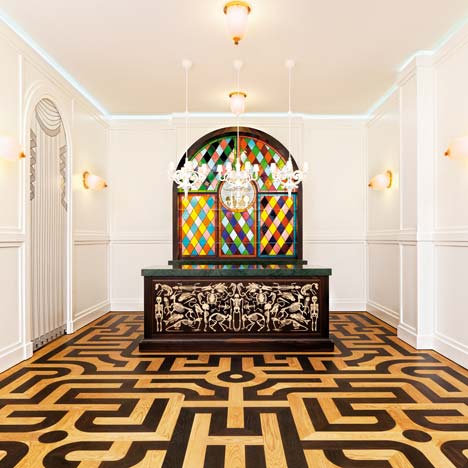
Job Lounge at the Groninger Museum by Studio Job
Here are some more images of the lounge designed by Belgian artists Studio Job for the Groninger Museum in the Netherlands (see our earlier story).
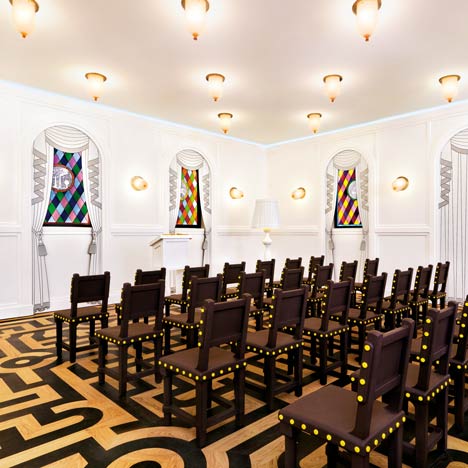
Entitled Job Lounge, the area comprises a cafe, hallway and 'chapel' for presentations.
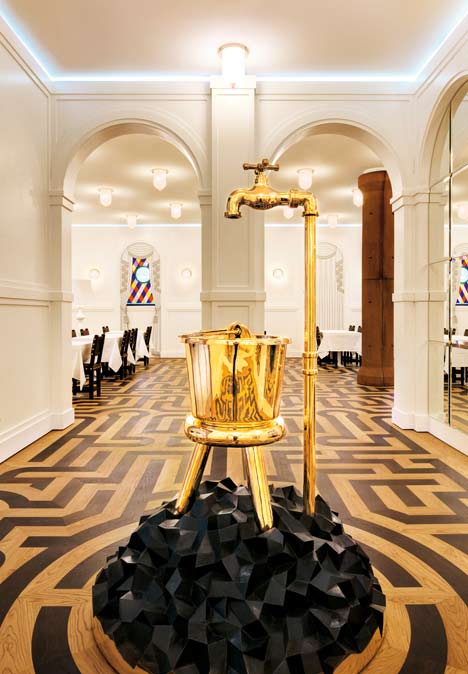
Parquet flooring with a labyrinthine pattern and stained glass windows with industrial imagery feature throughout the project.
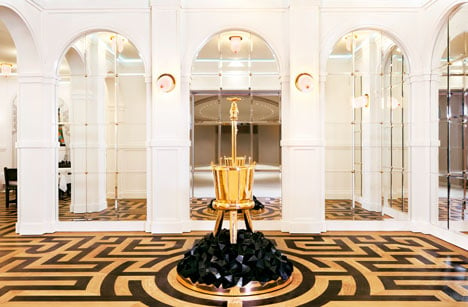
A fountain comprising a scaled-up bronze tap dripping into a bucket sits in the mirrored hallway, while glass wall and ceiling lamps shaped like breasts are dotted throughout the space.
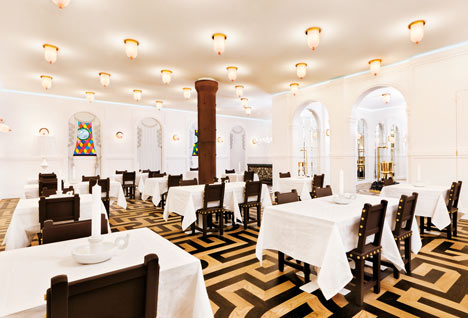
See also: Information Centre at the Groninger Museum by by Jaime Hayón.
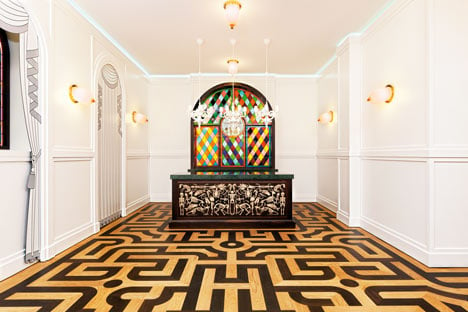
All our stories on Studio Job »
Here's some more information about the project, written by Jeroen Junte:
Job Lounge for Groninger Museum
The lounge created by Studio Job for the Groninger Museum is a showpiece in itself. The design duo of Job Smeets (1970) and Nynke Tynagel (1977) was inspired by 19th-century private clubs full of smoking gentlemen in top hats.
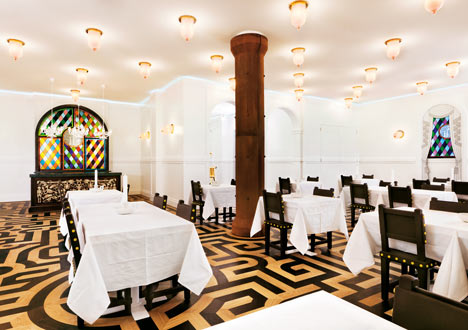
These were once sophisticated bastions with thick-pile carpets on creaking wooden floors; chandeliers were suspended from richly decorated ceilings supported by solid pillars. The muffled silence was only broken by the calming spatter of the fountain at the entrance. It was an ivory tower for the elite – just as it was on the Titanic. It is not without reason that this world has vanished.
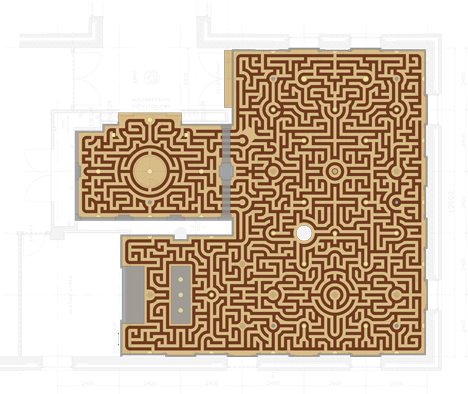
This gaudy gentility has been re-endorsed by Studio Job, with the use of iconic interior elements made of refined materials and produced by the best craftspeople. But this time, the use is ironic. In this creative process, Studio Job is not reticent about quoting from its own work. The fountain is made of cast bronze. The polychrome leaded-glass windows display stained glass representations. The bar is equipped with wooden marquetry. The glass wall lamps and ceiling lights were manufactured by the famous Venini glass company in Murano. It is an excessive luxury that is seldom seen these days.
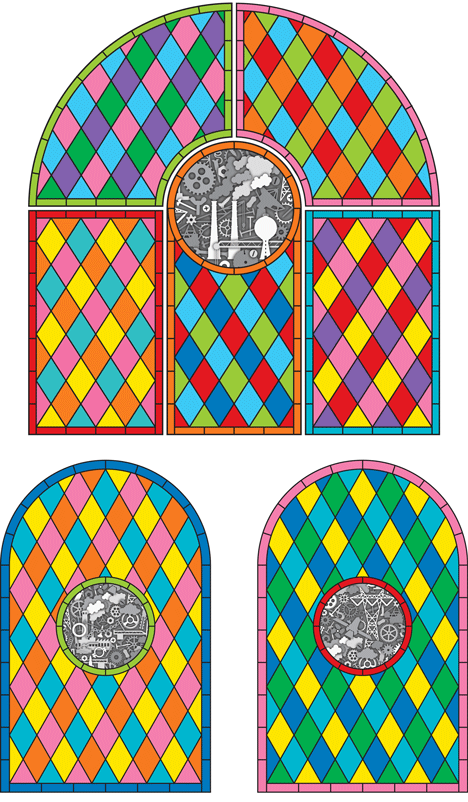
A relic from a bygone age. But, as always, things are not quite what they seem in the realm of Job. The glass lamps have the form of a pert female breast. The fountain consists of a dripping tap above a large bucket. The gothic castle chairs, manufactured by Moooi, are casted of plastic and the thick curtains, manufactured by Exposize, are nothing more than a print upon photographic material. This clash between old, new, high, low – good and bad, if you like –has been taken by Studio Job to the limit. The pillar is made of rusty iron and the rosettes in the mirror room are engraved with hip hop smileys.
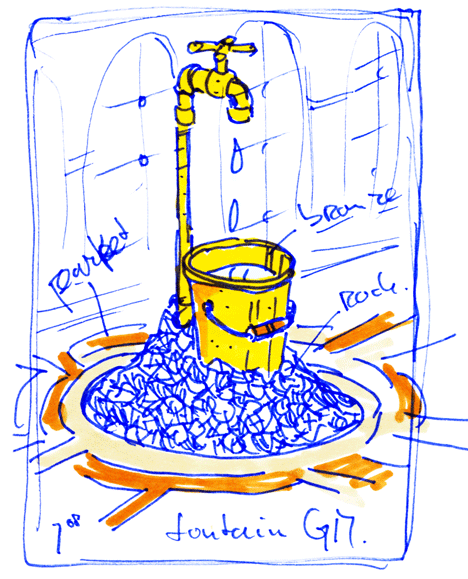
The tablecloths are equipped with archetypical representations of prisons and camps. Anyone examining the leaded-glass window in Coco-the-Clown colours will see oil drilling rigs, fuming factory chimneys and other industrial excesses. The exclusive parquet floor is a confusing labyrinth. Between the walls of the museum – of all places – mundane symbolism has been elevated to art, and beauty has been contaminated by banality. The neo-classicist interior forms a fremkörper even in Alessandro Mendini’s post-modernist building. Studio Job has created a gesammtkunstwerk in which fantasy and functionality mingle in a dream landscape that flouts all museological rules of good taste.
See also:
.
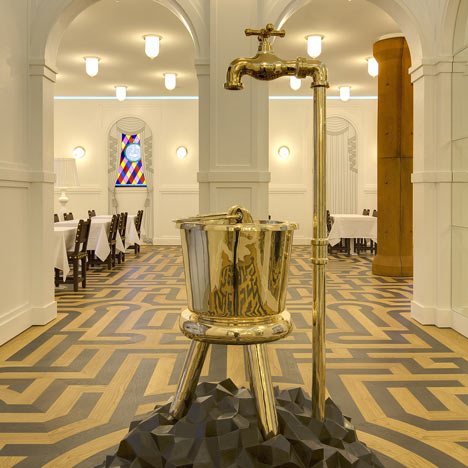 |
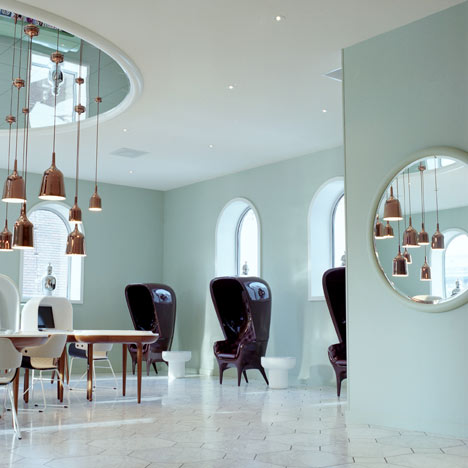 |
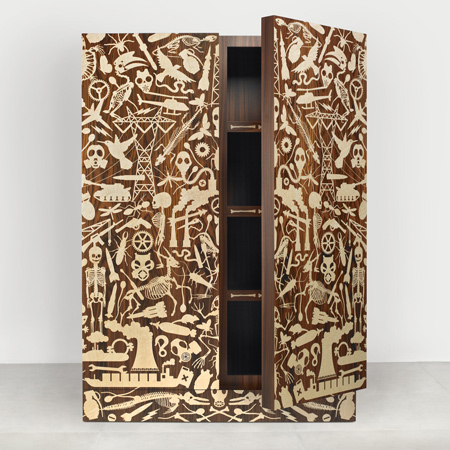 |
| Groninger Museum renovation |
Information Centre by Jaime Hayón |
Industry Series by Studio Job |